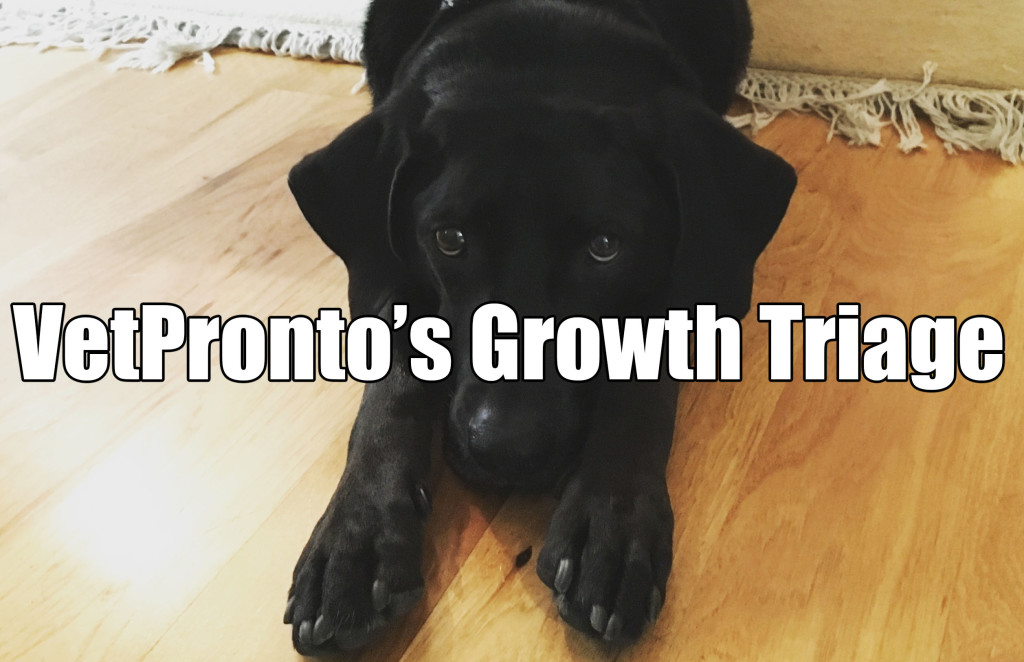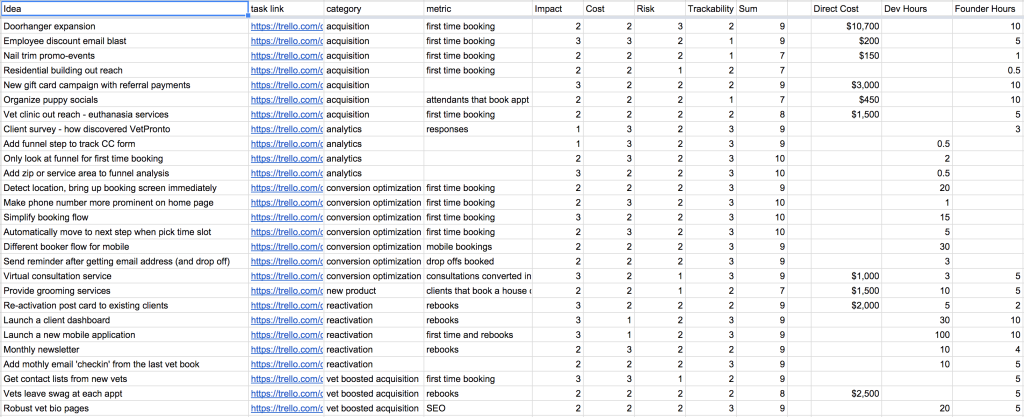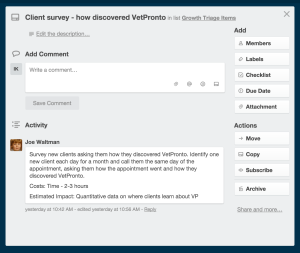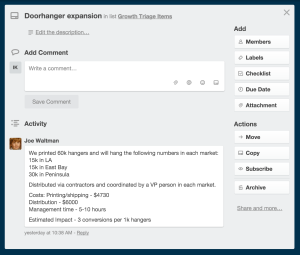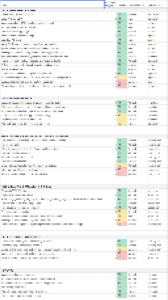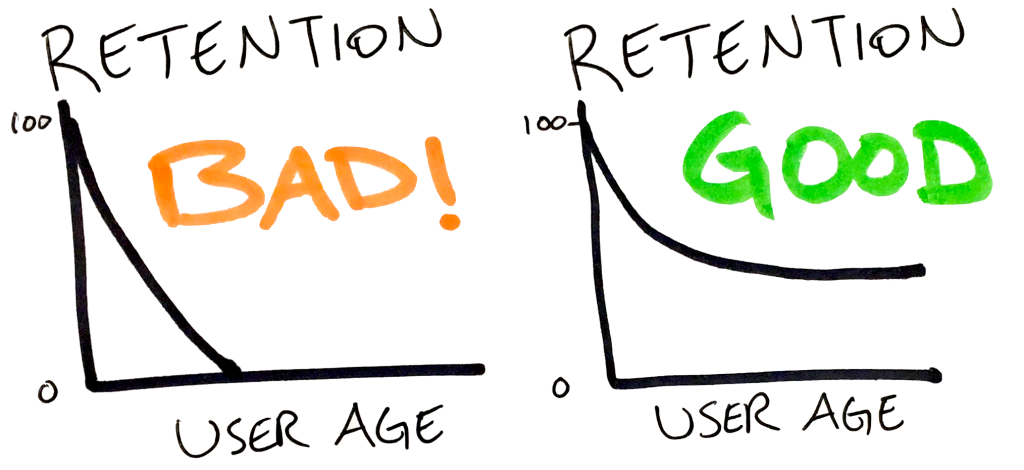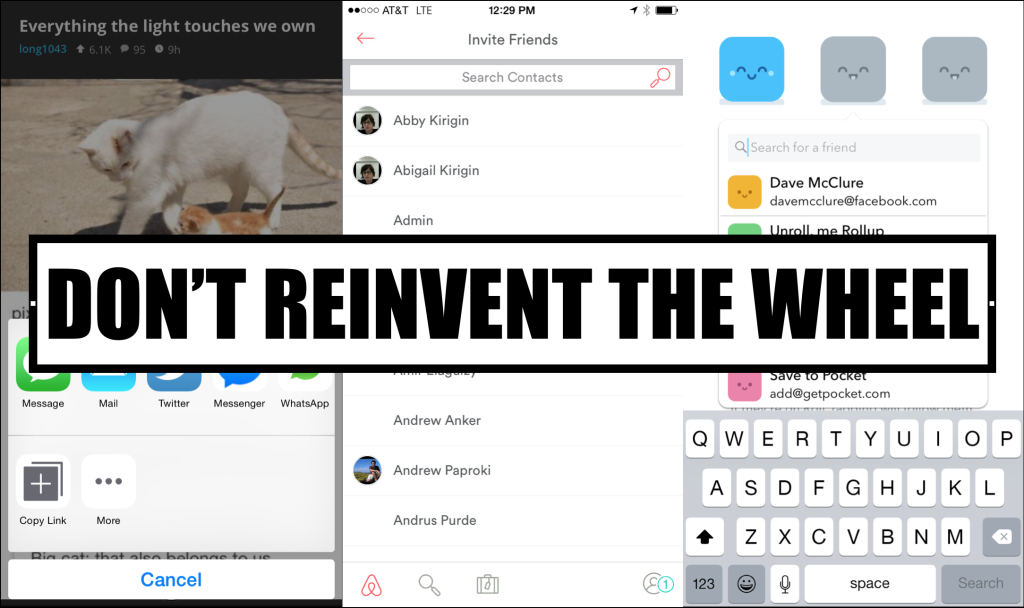
Good growth teams live and die by their numbers.
This is by necessity. Technology creates unfair advantages where first place is 10X bigger than 2nd and the rest combined. It’s true for Google, Amazon, Facebook, and other companies already founded today whose name we don’t recognize yet.
Startups without growth are dead, and the teams tasked with driving growth need to keep score to do their job.
This isn’t just about watching a graph on a dashboard. It’s actually crucial to good decision making. Growth teams should have a clear objective and have understand what levers affect their goal. They should triage ideas by cost, benefit, and risk.
This triage is central to a product team, answering a basic question: what should we do?
Keeping score is the best way to build up a stronger intuition and a comparable history of past projects to help you figure out what to do.
Start Right Now
Take an active project and ask: what will impact might be?
Write it down and share the hypothesis with your team. If you’re working on something without a clear objective, stop working on it. If you don’t have data yet, estimate.
Often you’ll even change how you work in order to measure this result. For example, the best way to measure impact is to run a parallel test with and without the change. Measuring changes in series is a lot harder because of conflating variables like seasonal changes, a PR hit, or a million other things.
The feedback loop starts when you measure how it went. Were you overly optimistic or pessimistic? In what time frame? Where there any side effects?
It’s also crucial to ask why. This is especially true if the test didn’t work. You had a hypothesis, the data has proven it wrong, and now you need to rebuild your intuition that created that hypothesis.
A virtuous cycle starts when you measure results. If things went up, you directly win. Either way, you build intuition and understanding. Then when planning what to do next, you make more informed decisions. More things you work on start to win. You get better faster.
Harder Than it Sounds
These ideas sound simple. But in practice, I’ve seen problems on product teams keeping score.
The aggressive operators on growth teams want to move the needle. That makes the work fast and frenetic. The problem seems to be that people want to move on to the next task to get more done rather than dwell on the past and measure what you already finished. That is such short term optimization.
How & Where
When you’re coming up with ideas on what to work on next, write down why you want to work on them. Get quantitative with how specific metrics will change. For comparing tasks, a simple spreadsheet works fine.
When you’re digging into a project, elaborate on what will change and why. Idealy link to evidence like the past performance of a similar project. For example, if last time you launched a new feature and emailed your users about it, what percentage of users engaging with the email used the product? This data can be used to predict how a new product announcement might be received. This probably lives in a product spec, which for me is either an asana task or google doc.
Post launch, go back to that hypothesis. Revisit the product spec and write down what actually happened.
This is true for both costs and benefits, like the time it takes to get something done. Check out this great post by Joel Spolsky on evidence based scheduling for predicting how long something will take to implement.
There are other ways of keeping score too, and they might influence culture event more. If you routinely do standups or all-hands or Q&As, talk about real numbers and wins. That kind of succinct public record keeping helps everyone understand that you’re here to win and take the challenge seriously.
Ringing the Gong
Speaking of culture, there is a fun anecdote from Facebook. Like many companies, Facebook would celebrate product launches. The “move fast and break things” culture was very powerful, and celebrating big launches is part of encouraging that idea.
They had a huge gong. When a huge product effort finished and launched, the product, design, and engineering leads would get up in front of everyone and hit the gong. The feature management systems were really robust so they could literally turn on the feature for users right when hitting the gong.
But the growth team at Facebook was different. They bragged that they never hit the gong. The thinking was that if they ever worked heads down for months on a huge product launch, there was almost no chance the effort was worth it. They were all about the incremental improvements over time.
Don’t just copy Facebook – find what works best for your team and company.
Putting It All Together
This is the fifth post in a series about growth. Subscribe here to get the next post right in your inbox.
We’re also putting together a class on growth which covers this whole process and more. This will launch in a few weeks, so subscribe to learn more.



